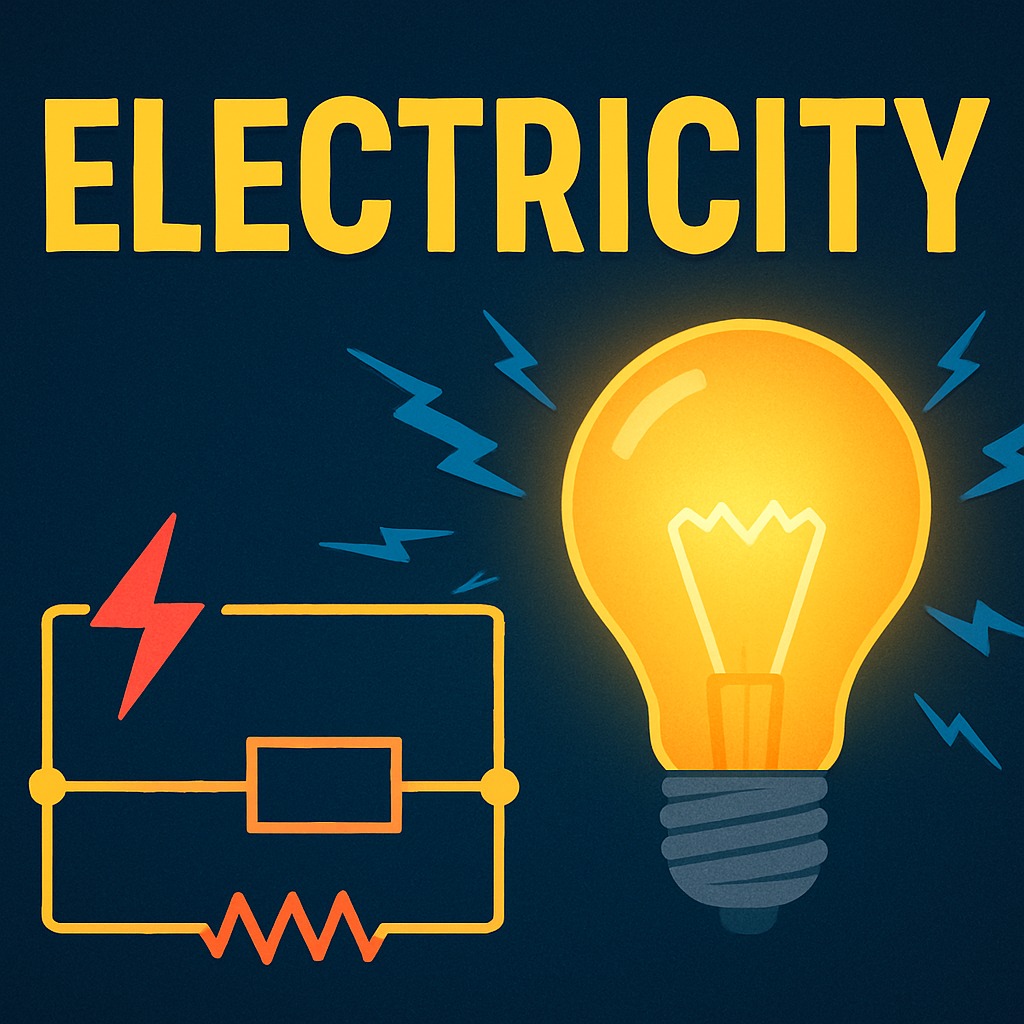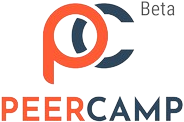Master the Basics of Electricity!
- All Levels
- 6 hours
- 11-18 Years
-
 Online Classes (Group)
Online Classes (Group)
 INR 2000.00 Monthly
INR 2000.00 Monthly

Ankit Singh
India |
Curriculum Structure: Electricity
- Introduction to Electricity
🔹Basic concepts of electric current
🔹Understanding potential difference
🔹Concept of resistance
🔹Overview of electric circuits
- Ohm’s Law
🔹Introduction to Ohm’s Law
🔹Calculating current, voltage, and resistance in a circuit
- Combination of Resistors
🔹Series combination of resistors
🔹Parallel combination of resistors
- Heating Effect of Electric Current
🔹Explanation of the heating effect
🔹Applications in daily life
- Electric Power
🔹Understanding the applications of electric power
🔹How electricity works in real-life appliances and circuits
Lessons schedule : Tuesday and Saturday
Master the subject of Economics in an easy and fun way with real world examples.
- All Levels
- 15 hours
- 16-18 Years
-
 Online Classes (Group)
Online Classes (Group)
 INR 1000.00 Per Lesson
INR 1000.00 Per Lesson

Pooja Agarwal
India |
Explore the basics of economics through interactive discussions and real-world examples. We'll analyze the decision-making processes of individuals, businesses, governments, and societies, uncovering the economic forces that shape our daily lives and the global economy.
Lesson 1: Demand and Supply
- Meaning
- Factors affecting demand and supply
- Laws of demand and supply with exceptions.
Lesson 2: Elasticity of Demand and Supply
- Meaning
- Types
- Different measurement techniques.
Lesson 3: Consumer Behaviour- Utility
- Concept, Laws of Utility.
- Cardinal and Ordinal Utility - assumptions
- Theory,
- Properties
- Equilibrium
Lesson 4: Production
- Concept
- Functions
- Short-run and long-run laws
- The production curves
Lesson 5: Costs and Revenue
- Concept
- Types
- Short-run and long-run laws
- The cost and revenue curves
Lesson 6: Market Mechanism
- Concept
- Different market structures along with their classification
- features and real-world examples
Lesson 7: Money
- Evolution of money
- Different kinds and functions of money
- Importance of money and Money supply
Lesson 8: Banking system
- Concept
- Types of banks.
- Functions and Role of Commercial and Central Banks with examples
Lesson 9: Monetary and Fiscal Policy
- Concept
- Classification
- Importance and implications
Lesson 10: Government Budget
- Meaning
- Need and importance of a budget
- Types
- Components and classification, along with insights into the current year's budget.
Lessons schedule
- One Class per week, preferably on Sunday.
- Timing and day are subject to flexibility according to your convenience.
Mastering Interview Preparation
- All Levels
- 1 hour
- 16-18 Years
-
 Online Classes (Group)
Online Classes (Group)
 INR 8500.00 Monthly
INR 8500.00 Monthly

Varun Rawat
India |
Landing your dream job requires more than just a polished resume—it involves careful preparation, strategic thinking, and confident communication. Start by thoroughly researching the company, its mission, culture, and recent developments, as well as the specifics of the role you’re applying for. This helps you tailor your answers and show genuine interest. Prepare by practising common interview questions and using the STAR method (Situation, Task, Action, Result) to structure compelling stories about your past experiences. During the interview, focus on clearly communicating how your skills and accomplishments align with the company’s needs. Emphasise your unique value by providing specific examples of how you’ve solved problems, led initiatives, or delivered results. Finally, ask thoughtful questions that show you’ve done your homework and are seriously considering how you’d contribute to the organisation. Confidence, preparation, and authenticity are key to making a lasting impression and landing your dream role.
Course Structure
Lesson 1: Interview Preparation
- How to prepare for an interview.
Lesson 2 : Resume making
- Mastering the art of resume making.
MS Excel: The Complete Spreadsheet Course
- All Levels
- 15 hours
- 11-18 Years
-
 Online Classes (1-to-1)
Online Classes (1-to-1)
 INR 1500.00 Per Lesson
INR 1500.00 Per Lesson

Sidhi Maheshwari
India |
Learn the art of MS-Excel and become a wiz at transforming datasets and building dashboards.
Lesson 1: Introduction
- The basic introduction about how and what led to the rise of Excel
Lesson 2: Interface
Lesson 3: Conditional Formatting
Lesson 4: Illustrations & Icons
Lesson 5: Charts in Excel
Lesson 6: Mathematical Functions
Lesson 7: Text Functions
Lesson 8: Date Functions
Lesson 9: Lookup Functions
Lesson 10: Excel Formulas
Lesson 11: Types of Errors
Lesson 12: Different Tabs in Excel
Lesson 13: Pivot Tables
Lesson 14: Pivot Charts
Lesson 15: Dashboard Creation

Lav Goyanka
India |
- Review of the representation of natural numbers, integers, and rational numbers on the number
line. Rational numbers as recurring/ terminating decimals. Operations on real numbers. - Examples of non-recurring/non-terminating decimals. Existence of non-rational numbers
(irrational numbers) such as , and their representation on the number line. Explaining
that every real number is represented by a unique point on the number line and conversely,
viz. every point on the number line represents a unique real number. - Definition of nth root of a real number.
- Rationalization (with precise meaning) of real numbers
and (and their combinations) where x and y are natural numbers and a and b are
integers. - Recall of laws of exponents with integral powers. Rational exponents with positive real bases
(to be done by particular cases, allowing the learner to arrive at the general laws.)
Online Certified_TEFL Tutor
- All Levels
- 2 hours
- 6-18 Years
-
 Online Classes (Group)
Online Classes (Group)
 INR 200.00 Per Lesson
INR 200.00 Per Lesson

Folashade Sadiq
Nigeria |
Hello! My name is Folashade, and I’m a TEFL-certified English tutor passionate about helping students achieve their language goals. Whether you’re preparing for IELTS, improving your conversational English, or enhancing your skills for professional growth, my lessons are designed to be interactive, practical, and tailored to your unique needs. I believe learning English should be an exciting and rewarding journey, and I’m here to guide you every step of the way.
Padam: Expressions in Grace and Emotion
- All Levels
- 10 hours
- 1-18 Years
-
 Online Classes (Group)
Online Classes (Group)
 INR 4000.00 Monthly
INR 4000.00 Monthly

Amruta Panchal
India |
Nrutya (Abhinaya) Item
Pallavi- Entry
Sthayi Bhava
Pallavi- (Right side and Left side)
2 Vinyasa
Anupallavi- (Right side and Left side)
2 Vinyasa
Charnam- 2 Vinyasa
Sanchari
Pallavi- Exit
What Will Be Taught
Lesson Name: Padam
- Entry
- Sthayibhava
- Pallavi
- Anupallavi
- Charnam
- Exit
Lessons schedule- Saturday
Timing- 5 pm to 6 pm
Phonics Power! Learn to Read with Confidence (Grades 1–3)
- All Levels
- 60 minutes
- 1-10 Years
-
 Online Classes (Group)
Online Classes (Group)
 INR 1500.00 Monthly
INR 1500.00 Monthly

Sakshi Sharma
India |
Course Structure:
- Phonics Classes for Kids (Grade 1 to 3) – Read, Speak & Shine!
- I help young children build strong reading and pronunciation skills through engaging and fun-filled phonics sessions, tailored for grades 1 to 3. (Read with confidence )
- My phonics classes focus on letter sounds, CVC words, blending, and fluency to make reading easy and joyful for kids.
- Also, classes 2-3, all subjects
Piano & Keyboard: Learn to Play and Perform
- All Levels
- 1 hour
- 6-18 Years
-
 Online Classes (1-to-1)
Online Classes (1-to-1)
 INR 2500.00 Monthly
INR 2500.00 Monthly

Jacob George
India |
Course Structure:
- Beginner Level:
Enroll for a fun as well as productive piano/keyboard learning from beginner level. - Intermediate Level:
Progress gradually with structured and systematic learning. - Advanced Level:
Enroll for a fun as well as productive piano/keyboard learning up to the advanced level. - Professional Techniques & Certifications:
Master professional techniques and certifications through structured and systematic learning.
Public Speaking and Creative Writing for Young Learners
- All Levels
- 1 hour
- 1-18 Years
-
 Online Classes (Group)
Online Classes (Group)
 INR 6500.00 Monthly
INR 6500.00 Monthly

Varun Rawat
India |
Course Structure
Unit 1: Introduction to Powerful Communication
- Understand the importance of public speaking and creative writing as distinct yet complementary forms of communication.
Unit 2: Public Speaking Essentials
- Learn how to deliver messages clearly and effectively to an audience.
- Develop key skills such as:
- Vocal control
- Confident body language
- Audience engagement
- Focus on structure, clarity, and persuasion in speech delivery.
Unit 3: Creative Writing Foundations
- Explore the expressive side of communication through imaginative language.
- Practice forms such as:
- Fiction
- Poetry
- Memoirs
- Understand the use of:
- Narrative techniques
- Character development
- Vivid imagery
Unit 4: The Synergy Between Speaking and Writing
- Discover how creative writing enhances public speaking through storytelling and emotional depth.
- Learn how public speaking brings written words to life through:
- Performance
- Audience connection
Unit 5: Mastering Expression
- Combine both skill sets to improve overall communication.
- Develop the ability to communicate with greater impact and authenticity in both written and spoken forms.











 Academics
Academics Tech Skills
Tech Skills Soft Skills
Soft Skills Hobbies & Wellness
Hobbies & Wellness
